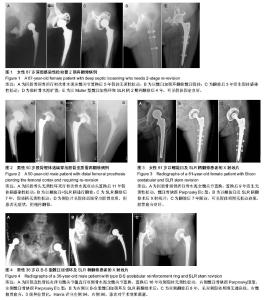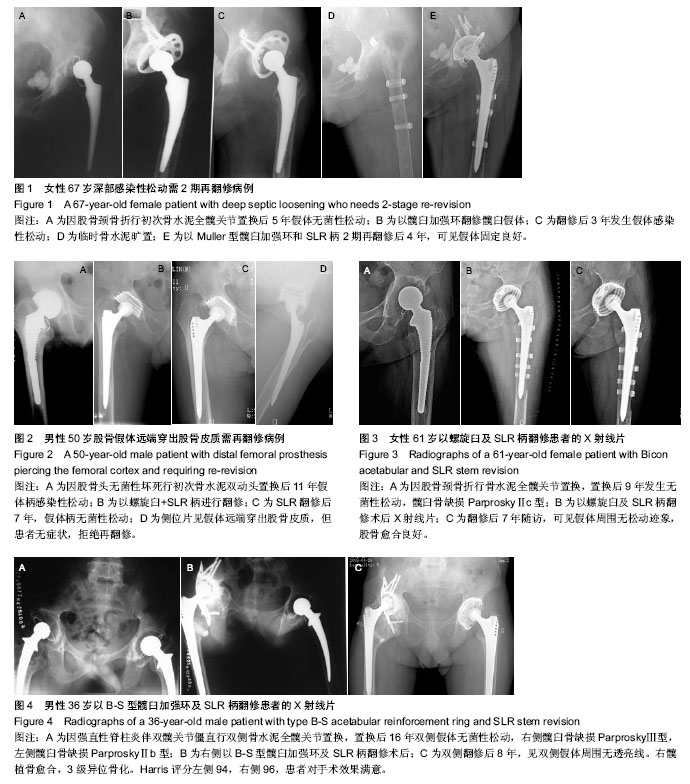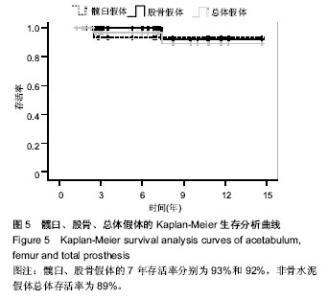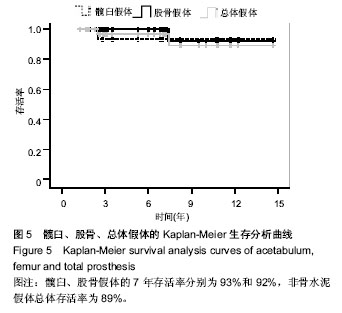| [1] Harkess JW. Arthroplasty of Hip: Revision of total hip arthroplasty. In Campbell’s Operative Orthopaedics. Ninth edition, St.Louis, Mosby Inc., 1998.
[2] Hunter GA, Welsh RP, Camerson HU, et al. The results of revision of total hip arthroplasty. J Bone Joint Surg. 1979; 61:419-423.
[3] Amstutz HC, Ma SM, Jinnah RH, et al. Revision of aseptic loose total hip arthroplasties. Clin Orthop Relat Res. 2004; 420:2-9.
[4] Gruen TA, McNeice GM, et al. Modes of failure of cemented stem-type femoral components. Clin Orthop. 1979;141:17-27
[5] Dorr LD, Wan Z. Comparative results of a distal modular sleeve, circumferential coating, and stiffness relief using the Anatomic Porous Replacement II. J Arthroplasty. 1996;11(4): 419-428.
[6] Katz RP, Callaghan JJ, Sullivan PM, et al. Long-term results of revision total hip arthroplasty with improved cementing technique. J Bone Joint Surg Br. 1997;79:322–326.
[7] Lian YY,Yoo MC,Pei FX. Cementless hemispheric acetabular component for acetabular revision arthroplasty, a 5-to 19-year follow-up study. J Arthroplasty. 2008;23:376-382.
[8] 寇伯龙,吕厚山,林剑浩.双锥面螺旋臼及加长矩型柄在髋关节翻修术中的应用[J].中华骨科杂志,2003,23(12):743-746.
[9] Schröder JH, Matziolis G, Tuischer J,et al. The Zweymüller threaded cup: a choice in revision? Migration analysis and follow-up after 6 years. J Arthroplasty. 2006;21(4):497-502.
[10] Abolghasemian M, Sadeghi Naini M, Tangsataporn S,et al. Reconstruction of massive uncontained acetabular defects using allograft with cage or ring reinforcement: an assessment of the graft's ability to restore bone stock and its impact on the outcome of re-revision. Bone Joint J. 2014; 96-B(3):319-324.
[11] Van der Donk S, Buma P, Slooff TJ, et al. Incorporation of morselized bone grafts: a study of 24 acetabular biopsy specimens. Clin Orthop. 2002;396:131-141.
[12] 叶一林,朱天岳,柴卫兵,等.混合植骨技术结合髋臼加强杯或钛网杯重建髋臼严重骨缺损[J].中华骨科杂志,2012,32(9): 830-836.
[13] Schneider L, Philippot R, Boyer B,et al. Revision total hip arthroplasty using a reconstruction cage device and a cemented dual mobility cup. Orthop Traumatol Surg Res. 2011;97(8):807-813.
[14] 黄强,杨静,沈彬,等.髋臼PaproskyⅢ型骨缺损髋臼加强杯翻修的中期疗效[J].中华骨科杂志,2013,33(5):507-513.
[15] Schlegel UJ, Bitsch RG, Pritsch M,et al. Acetabular reinforcement rings in revision total hip arthroplasty: midterm results in 298 cases. Orthopade. 2008;37(9):904, 906-913.
[16] Trumm BN, Callaghan JJ, George CA,et al. Minimum 20-Year Follow-Up Results of Revision Total Hip Arthroplasty With Improved Cementing Technique. J Arthroplasty. 2014;29(1): 236-241.
[17] Dohmae Y, Bechtold JE, Sherman RE,et al.Reduction in cement-bone interface shear strength between primary and revision arthroplasty.Clin Orthop. 1988;236:214-220.
[18] Wieser K, Zingg P, Dora C.Trochanteric osteotomy in primary and revision total hip arthroplasty: risk factors for non-union. Arch Orthop Trauma Surg. 2012;132(5):711-717.
[19] 孙俊英,唐天驷,洪天禄,等.全髋关节股骨侧假体翻修术[J].中华骨科杂志,2001,21(6): 346-349.
[20] Maurer SG, Baitner AC, Di Cesare PE. Reconstruction of the failed femoral component and proximal femoral bone loss in revision hip surgery. J Am Acad Orthop Surg. 2000;8: 354-363.
[21] 康鹏德,杨静,沈彬,等.大转子延长截骨在全髋关节翻修术中应用的临床评价[J].中华骨科杂志,2009,29(6):513-518.
[22] Zhu Z, Ding H, Shao H,et al. An in-vitro biomechanical study of different fixation techniques for the extended trochanteric osteotomy in revision THA. J Orthop Surg Res. 2013;8:7.
[23] Schofer MD, Efe T, Heyse TJ,et al. Modular noncemented femoral stem system in revision total hip arthroplasty. Orthopade. 2010;39(2):209-216.
[24] Zweymüller KA, Schwarzinger UM, Steindl MS. Radiolucent lines and osteolysis along tapered straight cementless titanium hip stems: a comparison of 6-year and 10-year follow-up results in 95 patients. Acta Orthop. 2006;77(6): 871-876.
[25] Neumann D, Dueckelmann L, Thaler C. Revision total hip arthroplasty using a cementless tapered revision stem in patients with a mean age of 82 years. Int Orthop. 2012;36(5): 961-965.
[26] Korovessis P, Repantis T. High medium-term survival of Zweymüller SLR-plus stem used in femoral revision. Clin Orthop Relat Res. 2009;467(8):2032-2040.
[27] St?drý V, Dungl P, Hajný P, et al. The Zweymuller endoprosthesis in hip joint revision surgery. Acta Chir Orthop Traumatol Cech. 2001;68(4):230-238. |



